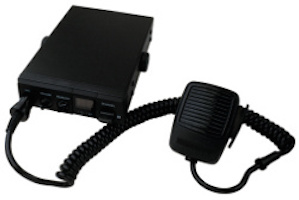 As we all know, phone systems can go down in emergencies. So when the next one occurs, you can be part of a community that’s always connected: Truckers. They have their own grid of “mobile devices” – Citizen Band radios mounted in and powered by their big rigs. If you are EVER caught in a traffic jam, and you lose your GPS updates from apps like Waze, the truckers always have the low down!
As we all know, phone systems can go down in emergencies. So when the next one occurs, you can be part of a community that’s always connected: Truckers. They have their own grid of “mobile devices” – Citizen Band radios mounted in and powered by their big rigs. If you are EVER caught in a traffic jam, and you lose your GPS updates from apps like Waze, the truckers always have the low down!
Whether you are traveling for casual reasons or in an emergency evacuation, being able to tune into truckers’ CB chatter will help you avoid problem areas and re-rerouting. All along the U.S highways, truckers are linked up through CB radios, and they’re able to pass information quickly between themselves. Usually it’s about traffic, but in an emergency, access to this pre-established network can be extremely valuable if you are seeking emergency assistance.
Communicate During an Emergency
During any kind of emergency access to information about what’s happening – about ongoing dangers, road and bridge closures, evacuation orders, or new threats – can make all the difference in how well you and your loved ones come through the crisis.
A communication plan is part of any complete preparation plan. Information can become just as important as food and water during a crisis. And you can’t plan to rely on normal communication channels. Power outages and storms can cut off your access to news from T.V. or the Internet. And during an emergency, there’s a predictable increase in call volume, often enough to bring both cell phone and land line service to a screeching halt.
What you really need is access to the trucker network, and better yet, some kind of two-way radio of your own. While the best system is an amateur radio they are currently regulated by the federal government so for regular folks who don;t have the time or money to invest in the training they require, use a Citizens Band radio.
Use a CB Radio to Stay Connected During an Emergency
CB radio is made up of 40 channels within the 27 Mega-Hertz band. It’s a short-range communication system used by individuals and businesses alike, but the most well-known users are America’s truckers. The typical CB range is two to twenty miles, depending on the terrain and the size of your antenna. But when you listen in to the trucker channels, you can extend your range, in a manner of speaking, because they essentially have a relay of information already set up.
To tune into the truckers and other drivers, listen to channel 19 and occasionally switch over to channel 17. These two channels are used most by travelers. Another important channel to know about is channel 9. This is the lone CB channel reserved for emergencies by the FCC. That means if you have a CB radio, you can’t call out on that channel. During an emergency, though, you want to listen to it regularly to gather any information you can about what is going on.
Many towns and cities also designate a channel for local residents. Finding out your own town’s CB channel gives you another source of information during a breakdown or emergency. Through this local channel, you can hear from businesses, churches, and community organizations that have news to share. And you can relay any valuable information that you happen to have as well.
A fourth way to use your CB radio during an emergency is to set up a family-and-friends channel. This basically just means agreeing ahead of time with your nearby friends, neighbors, and family members who own CBs what channel you’ll use to communicate on.
No License Required
One of the reasons we recommend CB radios over the other options like ham radios is that the CB world is still a bastion of freedom in a highly regulated world – you don’t have to purchase a license to operate a CB.